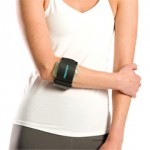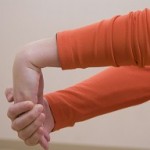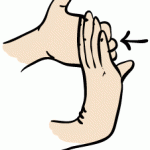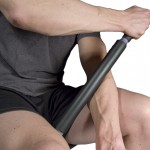Prevent Tennis Elbow
Tennis elbow affects thousands of players every year. Some treat it with physical therapy or acupuncture. Here are other strategies to reduce your risk and return to action on your own.
Many pros recommend that you spend the extra money to string your racquet with gut, which is softer and more forgiving than some of the synthetics. Just as with the wrong strings, a racquet that is too long, too rigid, too light, has the wrong grip size (generally too small) or is strung too tightly will increase the vibrations that travel up through the hand and arm putting a player at greater risk of injury.
Poor stroke mechanics are another big reason that recreational tennis players suffer from tennis elbow. This is particularly true for those who have a wristy backhand or who maintain a rigid forearm and don’t follow-through properly on their backhands. Hitting the ball in the sweet spot of the racquet is also a key to minimizing the vibrations that otherwise place excessive stress on the muscles and tendons. Taking some lessons to perfect your form can go a long way toward helping to prevent unnecessary demands on your body.
It is also generally helpful to wear a brace designed to lessen the stress to the involved tissues with routine activity. Some advocate forearm straps while other suggest wearing a wrist splint to actually prevent the offending motion. Many physical therapists recommend the Aircast Armband, to allow for greater function and return to play. Of course, it is important to minimize the ongoing stress to the area by limiting or refraining from problematic activities while rehabilitating.
Stretch before you begin playing a game or even practice. Research studies have shown that cold muscles are more prone to injury. Warm up with jumping jacks, stationary cycling, running or walking in place for 3 to 5 minutes. Then slowly and gently stretch, holding each stretch for 30 seconds. Additionally, you ought to stretch after you’ve completed playing as well. This will permit you to keep the muscles surrounding the tendon as supple as possible. A short time of stretching can go a great distance towards keeping you in excellent condition and injury free. For Tennis Elbow, the focus is on strengthening the wrist extensors and forearm supinators (which turn the palm upward).
- Hold your injured arm out straight, palm down.
- Use your other hand to hold the back of your injured arm’s hand.
- Press down so your fingers point to the ground.
- You should feel a light stretch on the top of your forearm. Do not stretch to the point of pain.
- Hold you injured arm out straight, palm up.
- Use your other hand to hold the palm of your hand and press down.
- You should feel a light stretch on the top of your forearm. Do not stretch to the point of pain.
- Use the massage stick to gently work the muscles on the top of your forearm.
- Concentrate on working any tender areas.
Footwear
Wear tennis shoes with good support to prevent ankle injuries. For added support, wear two pairs of socks or specially padded tennis socks. Check out our Getting a Good Tennis Sneaker post that will tell you the brands of tennis sneakers to look for.


























